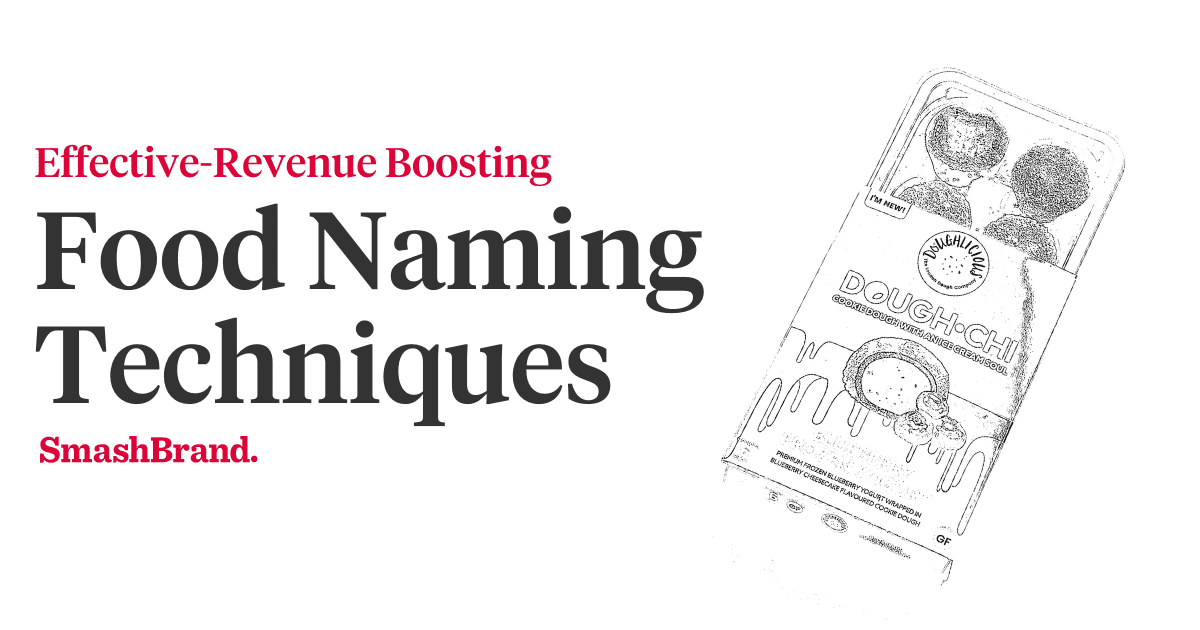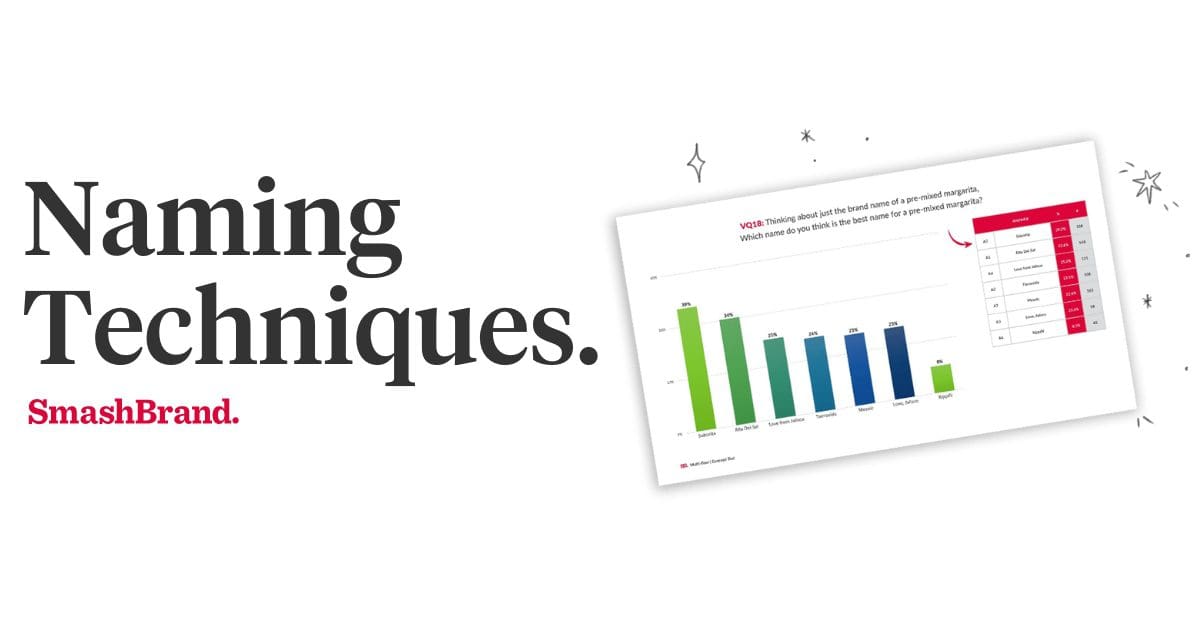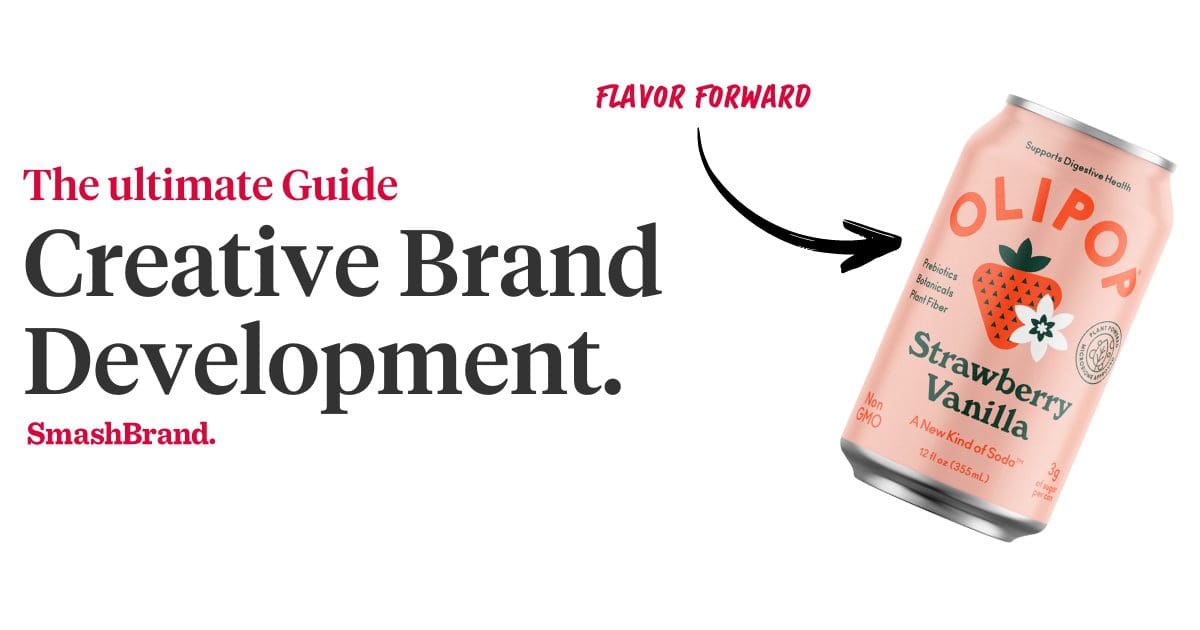Rome wasn’t built in a day and neither is an effective brand positioning process. Every successful brand today has invested and reinvested significant time and resources in a compelling brand positioning strategy. As a result of the effort, they are firmly planted in the market with solid brand equity. Effective brand positioning is the make-or-break factor in the consumer goods industry, where shelves are crowded with countless options.
Brand positioning is the art of establishing a unique and valuable brand identity in consumers’ minds—for instance, people just “Google” Febreeze rather than search for room fragrance sprays. Similarly, if someone gets hurt, they ask for a band-aid which gives the brand consistent recognition no matter how many private label versions exist. When done right, positioning offers a competitive advantage, builds equity, and fosters unwavering customer loyalty.
This comprehensive guide will dissect the components of a successful brand positioning framework. You will learn everything from Al Ries’s teachings on positioning to modern trends in the global market. You will understand how to position yourself as an industry leader and capture the attention of your target audience.
What Brand Positioning Isn’t.
People often confuse brand positioning with concepts like product positioning and brand strategy. Brand positioning is the strategic process of building a unique and valuable perception of a brand in the minds of consumers. It goes beyond just the product itself. Product positioning focuses on highlighting the specific features and benefits to differentiate it from competitors, while brand positioning encompasses the broader brand identity, values, and emotional connections.
Although product positioning is vital, brand positioning plays a crucial role in the overarching marketing strategy. It aligns the brand position with the target audience’s needs and desires, shaping the brand strategy, messaging, and customer experience. A well-defined brand position lays the foundation for crafting a cohesive and resonant brand strategy. It drives long-term success in competitive landscapes.
Critical Components of Brand Positioning
An effective brand positioning strategy involves several critical components that create a distinct and compelling brand identity. These components include:
- Target Audience: The foundation is identifying and profoundly understanding the target market or customer segment. Their needs, preferences, and behaviors inform every aspect of the brand positioning.
- Unique Selling Proposition (USP): Differentiating the brand by offering a unique value proposition that attracts the target audience and convinces them why they should buy from your brand. It sets the company apart and highlights its competitive advantage.
- Brand Promise: A company’s commitment to deliver on the brand’s core values and the unique experience it offers. It establishes trust and fosters long-term loyalty among target customers.
- Positioning Statement: This concise and compelling statement articulates the brand’s essence, target audience, unique benefits, and reasons it outshines competitors. It becomes an effective means of brand communication and marketing efforts.
Integrating these components allows a brand to establish a solid and resonant position that forges deep emotional connections. It paves the way for sustained success in a continuously evolving and competitive marketplace.
The Brand Positioning Process
Developing solid brand positioning requires a strategic process that starts with comprehensive market research. Gathering data upfront guides the strategy and helps avoid common challenges and pitfalls along the road. The following are the essential steps involved in a compelling brand positioning process.
Conducting Market Research
Detailed market research is the primary step of brand positioning. It provides invaluable insights into the market landscape, consumer preferences, and competitive dynamics, enabling informed decision-making and strategic brand positioning. But you can conduct the “wrong” market research, so like all studies, misaligned market research that does not understand the context of the brand, category, or distribution channel can do more harm than good.
Thorough market research begins with an in-depth analysis of the market landscape. It includes market segmentation, identifying potential customer groups, and understanding market dynamics. Companies must dissect the market into distinct segments to pinpoint the target audience and tailor the positioning strategy accordingly.
Study consumer behavior, preferences, and factors that influence their purchase decisions. Use this information to craft an attractive brand positioning statement that resonates with customers.
Competitor Analysis
During the market research phase, carefully analyze the competing brands that offer the same product or service. Explore their brand architecture and market positioning strategies. Identify gaps, opportunities, and potential threats. This analysis allows companies to differentiate themselves effectively instead of appearing as a “me-too” brand.
Studying the basics of brand positioning offers valuable lessons and insights for crafting an effective positioning strategy. In-depth market research lays the foundations for a well-informed and strategic brand positioning approach.
Define the Target Audience
After conducting thorough market research, use the data to carefully define the target audience. A good approach is to segment the market and identify the specific group (often within a group) of consumers that a brand aims to serve. Defining the right audience ensures the selection of the right type of positioning strategy.
Companies may face cultural differences, language barriers, or generational gaps at this stage. These challenges hinder accurate target audience identification. Companies can segment their target audience based on the following three methods:
Demographic Segmentation
Demographic segmentation involves dividing the market based on age, gender, income, education, and location. For instance, Olay successfully targets middle-aged women with its anti-aging skincare products, while Old Spice targets men. This type of segmentation is common for CPG products. Demographic segmentation has the following pros and cons.
Pros
- Demographic data can be accessed through government-maintained census data, which are updated every ten years and readily available to the public.
- Demographic data is a great way to monitor societal trends and shifts over time, both online and offline.
- Identifying trends can help brands to track, monitor, and analyze the customer journey and make market predictions for the future.
- Segmentation helps focus marketing efforts, ensuring products, campaigns, services, and communications are streamlined and delivered to the most appropriate audience for that brand.
Cons
- Grouping people based on simple demographic information can lead to brands making blanket statements about consumers, which can be misleading and potentially offensive.
- Demographic data can tell a person’s age and yearly earnings, but it doesn’t give insights into their character, wants, and values.
- Demographic segmentation is prone to generalization and stereotyping criticisms, leading to inaccurate consumer behavior assumptions.
Psychographic Segmentation
Psychographic segmentation focuses on consumers’ personalities, lifestyles, values, and interests. Understanding these factors allows companies to craft positioning strategies that perfectly align with their target audience’s mindsets. A notable example is Patagonia’s brand positioning, which appeals to environmentally conscious consumers who value sustainability.
Pros
- Psychographic segmentation helps to build a more holistic picture of consumers when used in conjunction with other forms of segmentation.
- It uncovers unseen motivations and attitudes behind buyer decisions
- Creating psychographic segments enables clearer, more targeted messaging
- Consumer profiles created through psychographic data can allow businesses to reposition the same product to various audiences
Cons
- It is harder to perform than other types of market segmentation because it requires participation in specific psychographic surveys.
- Clear interpretation standards must be established for analysis, as psychographic segmentation can be ambiguous and inconsistent.
- Developing questions for psychographic surveys can be difficult, as it is expected to be assumptive about the target market.
- Meaningful psychographic segmentation usually requires quantitative and qualitative market research methods, which can prove costly.
Behavioral Segmentation
Behavioral segmentation considers consumers’ purchasing behaviors, product usage patterns, and brand loyalty. For instance, Netflix uses behavioral segmentation to recommend movies and TV shows to its customers based on their viewing history and preferences. The company’s algorithms analyze data on what customers have watched, how long they’ve watched, and what they’ve searched for, allowing them to deliver highly personalized recommendations.
Pros
- Allows CPG brands to create personalized and relevant marketing campaigns tailored to specific needs and preferences.
- Brands can design targeted campaigns that appeal to motivations, emotions, and pain points, leading to more effective marketing efforts and improved return on investment.
- Behavioral segmentation helps brands identify untapped opportunities, niches, and trends, allowing them to stand out from competitors.
Cons
- Requires extensive data collection and analysis, which can be time-consuming and resource-intensive
- It may not always capture emerging trends or changes in consumer behavior, necessitating regular updates to segments to ensure relevance and effectiveness in marketing strategies.
Modern tools like machine learning techniques and artificial intelligence can make the job easier. These technologies can analyze vast consumer data and identify patterns and trends. Cultural nuances, regional differences, and evolving consumer preferences must also be considered.
Identify The Unique Value Proposition
A unique value proposition is the cornerstone of an effective positioning strategy. It encapsulates all the benefits and advantages the brand offers its target audience. Companies must identify a unique and compelling UVP to capture consumers’ attention.
To identify the unique value proposition, companies must thoroughly understand the competitive landscape and determine what makes their brand unique. The goal is to focus on a unique dimension other brands do not target. This could be a superior product formulation, an innovative feature, exceptional customer service, or a brand purpose that aligns with consumer values.
Companies can effectively utilize the brand positioning map to identify their differentiating factor. Once the unique aspects of the brand have been identified, the next step is to translate them into a compelling brand promise. It must communicate the specific benefits and value to the target audience. A well-crafted brand promise resonates emotionally and underscores the brand’s unique selling proposition and value proposition.
Crafting the Brand Positioning Statement
Brand positioning ends with a concise and captivating statement that summarizes the brand’s unique value proposition, target audience, and competitive differentiation into a powerful and memorable narrative. An effective positioning statement consists of three vital components. Firstly, it defines the target audience or market segment that the brand is designed to serve. Secondly, it articulates the unique benefits or value proposition that sets the brand apart from competitors.
Lastly, it establishes the brand’s competitive frame of reference by highlighting the alternative products or services it aims to compete against. For example, a positioning statement for a premium skincare brand might read: “For discerning women seeking radiant, youthful skin, our revolutionary, plant-based formulas deliver unparalleled age-defying results, outperforming traditional chemical-laden creams.”
Example of Effective Positioning Statement
The following brand positioning statement is taken from White Dog Distilling:
Founded in 2016 by Carlo and Alecia Catucci, White Dog Distilling stands for passion, spirit, and the journey from grain to glass. Bolstered by Carlo’s background in physics and Alecia’s culinary and product development experience, they set forth one goal: to produce high-quality distilled spirits that could appeal to novice spirit drinkers and longtime fans alike.
After breaking down this statement into different components, one can see that the statement has the following main points:
- It uses storytelling to connect with the target audience
- The company uniquely sells products by focusing on quality, craft, and innovation
- The brand communicates its core values effectively by highlighting its commitment to using quality materials and processes.
Brand Positioning Implementation
Once a company has developed a solid strategy, the next hurdle is effectively implementing and communicating that strategy. The company must ensure its brand values and messaging resonate with the target audience across all touchpoints during this stage. This involves aligning the brand identity and marketing mix, maintaining a consistent brand message, and delivering a customer experience that lives up to the brand’s promise.
Aligning the Brand Identity and Marketing Mix
Aligning the brand identity and marketing mix brings the brand positioning to life. All the visual elements, including the logo, color palette, and typography, must seamlessly reflect the brand’s positioning and target audience. At the same time, the marketing mix, which comprises product pricing, promotion, and distribution strategies, must reinforce the unique value proposition and competitive differentiation.
Consistency in Brand Messaging
Consistent brand messaging is crucial for tying all communication efforts together, ensuring effective conveyance of the brand’s positioning across various channels. Every brand touchpoint, from advertising campaigns to social media interactions, should reinforce the core positioning statement, resonating with the target audience’s needs, desires, and values. This consistency fosters brand recognition and builds trust and loyalty among consumers.
Delivering the Promised Customer Experience
Delivering the promised customer experience tests a successful brand positioning strategy. Every interaction with the brand, whether through product usage, customer service, or brand advocacy, must align with the positioning and live up to the expectations. Companies can forge deep emotional connections with the target audience by consistently delivering on the brand promise. In return, it fosters long-term brand loyalty and advocacy.
Brand Positioning Examples
We’ve compiled a few of the best and worst brand positioning examples. Studying these examples, one can learn what can go wrong and how to avoid such mistakes when positioning a company in a specific market.
Good Brand Positioning Examples
Seventh Generation: The Seventh Generation focuses on sustainable, eco-friendly products that are safe for people and the planet. The brand’s commitment to social and environmental responsibility has helped it build a loyal following among consumers who prioritize sustainability.
Tom’s of Maine: Tom’s of Maine focuses on natural, sustainable products free from artificial ingredients. The brand’s commitment to transparency and social responsibility has helped it build a solid following among health-conscious consumers.
Chobani: Chobani’s brand positioning emphasizes the health benefits of its Greek yogurt, which is high in protein and low in fat. The brand also positions itself as a socially responsible company, with initiatives such as supporting local farmers and reducing its environmental impact.
Milk-Bone: Milk-Bone markets its dental chews as a unique combination of dog treats and oral health care for pet owners who prioritize their pets’ well-being.
CoverGirl: CoverGirl positions itself as a cosmetics brand that caters to a wide range of consumers, including men and gender-fluid individuals, appealing to consumers who value inclusivity and diversity
Perhaps The Worst Brand Positioning Examples
Johnson & Johnson – Baby Powder: Johnson’s Baby Powder suffered a disastrous brand positioning failure due to the product’s talc being contaminated with cancer-causing asbestos. Despite alleged knowledge since the 1970s, the company failed to address safety concerns transparently, leading to thousands of lawsuits and eroding consumer trust. This cautionary tale highlights how ignoring product quality and safety can devastate an iconic brand’s positioning.
H&M’s Sweat Shirt: H&M faced severe backlash for promoting a children’s sweatshirt featuring an African American child model wearing a hoodie with the words “coolest monkey in the jungle,” which was widely perceived as a racist slur. Despite removing the offensive image, the brand’s apparent lack of cultural sensitivity and failure to prevent such a tone-deaf marketing campaign severely damaged its brand positioning and reputation, showcasing the consequences of insensitivity towards diversity and inclusion.
Measuring and Refining The Brand Positioning
Maintaining and refining your brand’s position in the market is an ongoing process that requires continuous monitoring and adaptation to changing market dynamics, consumer preferences, and competitive landscape. This iterative approach ensures your brand remains relevant, resonates with its target audience, and maintains a competitive edge.
Monitoring brand perception
Tracking brand perception assesses the effectiveness of your positioning strategy. It involves gathering insights from various sources, such as consumer surveys, social media listening, and market research, to understand how your target audience perceives your brand about competitors. You can identify gaps between your desired positioning and brand perception, enabling you to make informed adjustments to align with consumer expectations and preferences.
Tracking brand awareness and loyalty
Brand awareness and loyalty are critical indicators of the success of your positioning strategy. Monitoring brand awareness metrics reveals how well your brand is recognized and understood. Customer loyalty metrics provide insights into the strength of emotional connections and repeat purchase behavior. By tracking these metrics over time, you can gauge the effectiveness of your positioning in resonating with consumers and driving long-term brand loyalty.
Adjusting positioning strategy as needed
Based on the insights gathered, you may need to adjust your positioning strategy to better align with evolving market conditions and consumer preferences. This could involve refining your unique value proposition, repositioning your brand to target a different segment, or adapting your messaging and marketing efforts to communicate your brand’s essence better.
Regularly revisiting and refining your positioning strategy ensures that your brand remains competitive, relevant, and aligned with the needs and desires of your target audience. Measuring and refining your brand positioning is an iterative cycle that requires continuous effort and adaptability.
Brand Positioning in Packaging Design
While we are known for packaging design and consumer testing, brand positioning is how we set the stage for meaningful client outcomes. As your brand positioning agency, our Path To Performance™ process will establish a strong retail presence through our brand positioning framework that enables success for future line extensions. Book a time to discuss your project with our team.






